
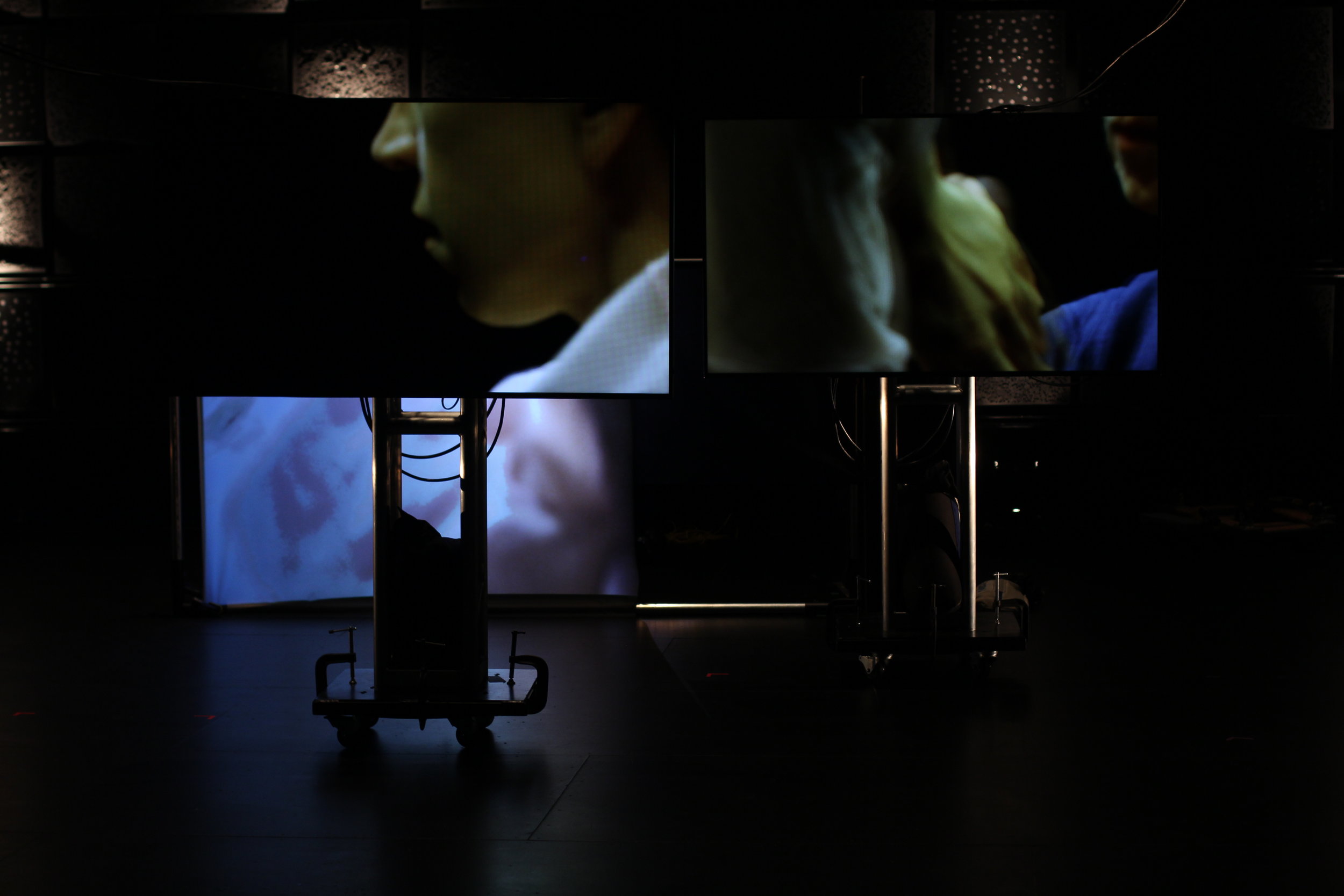
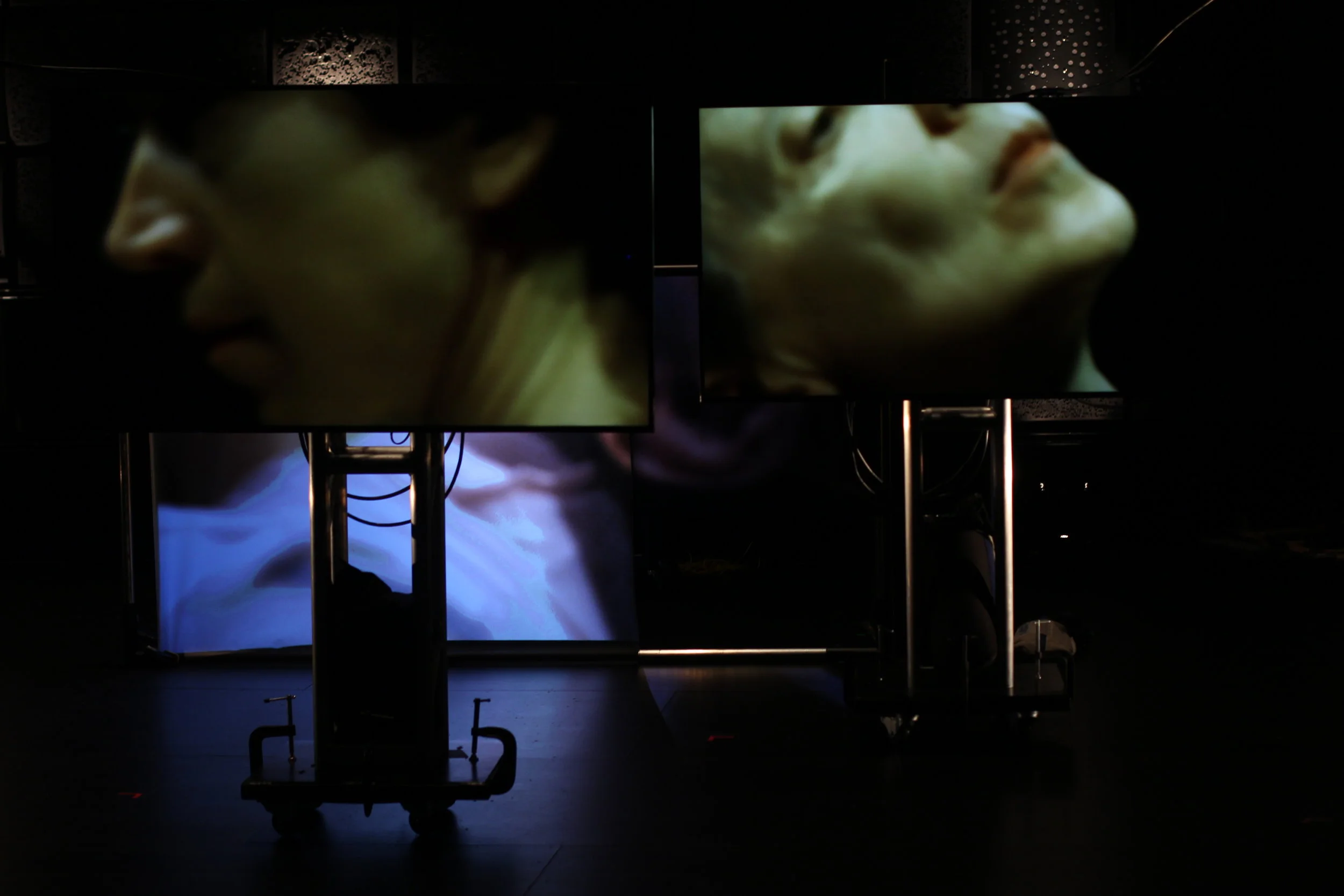
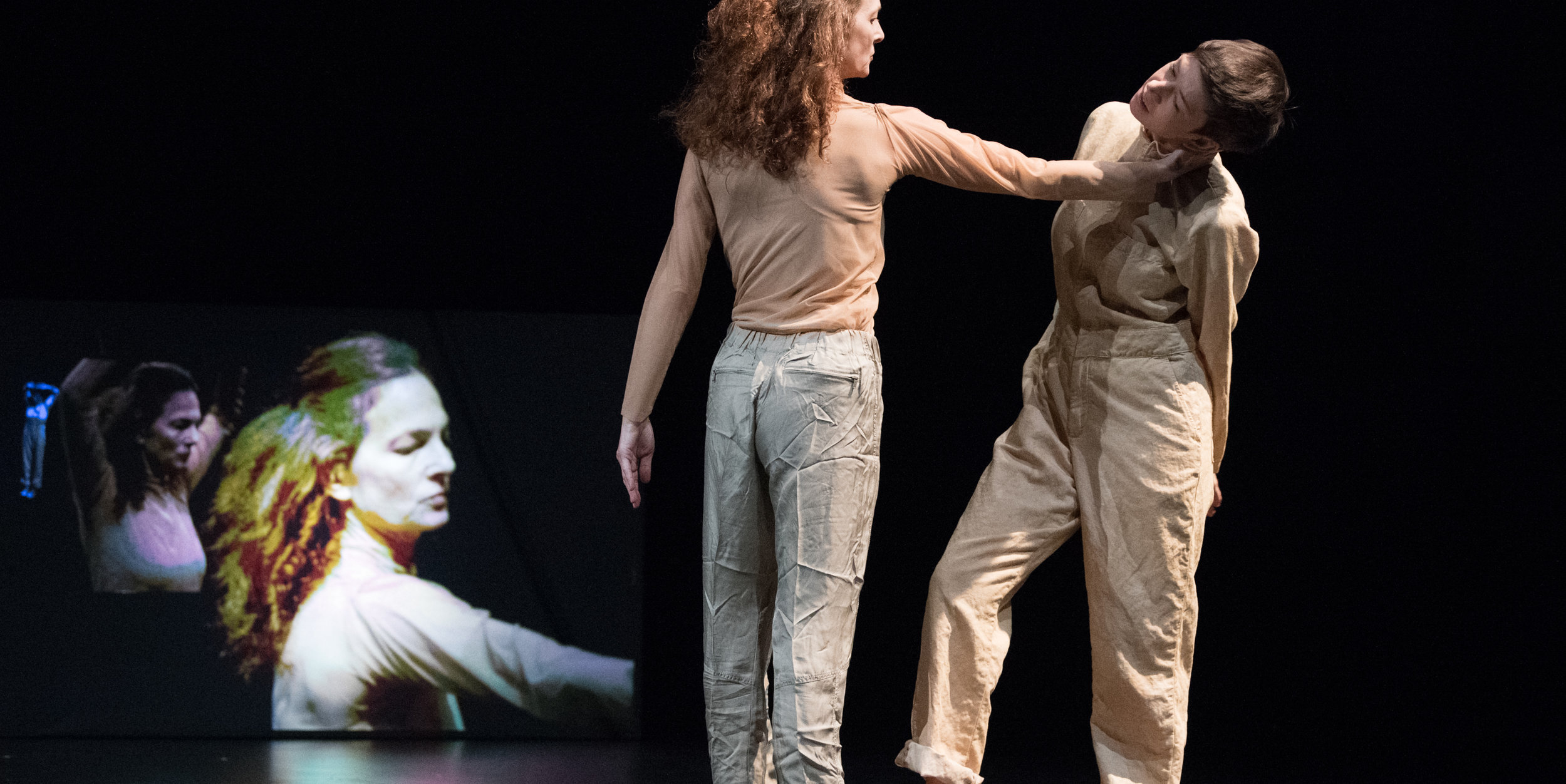

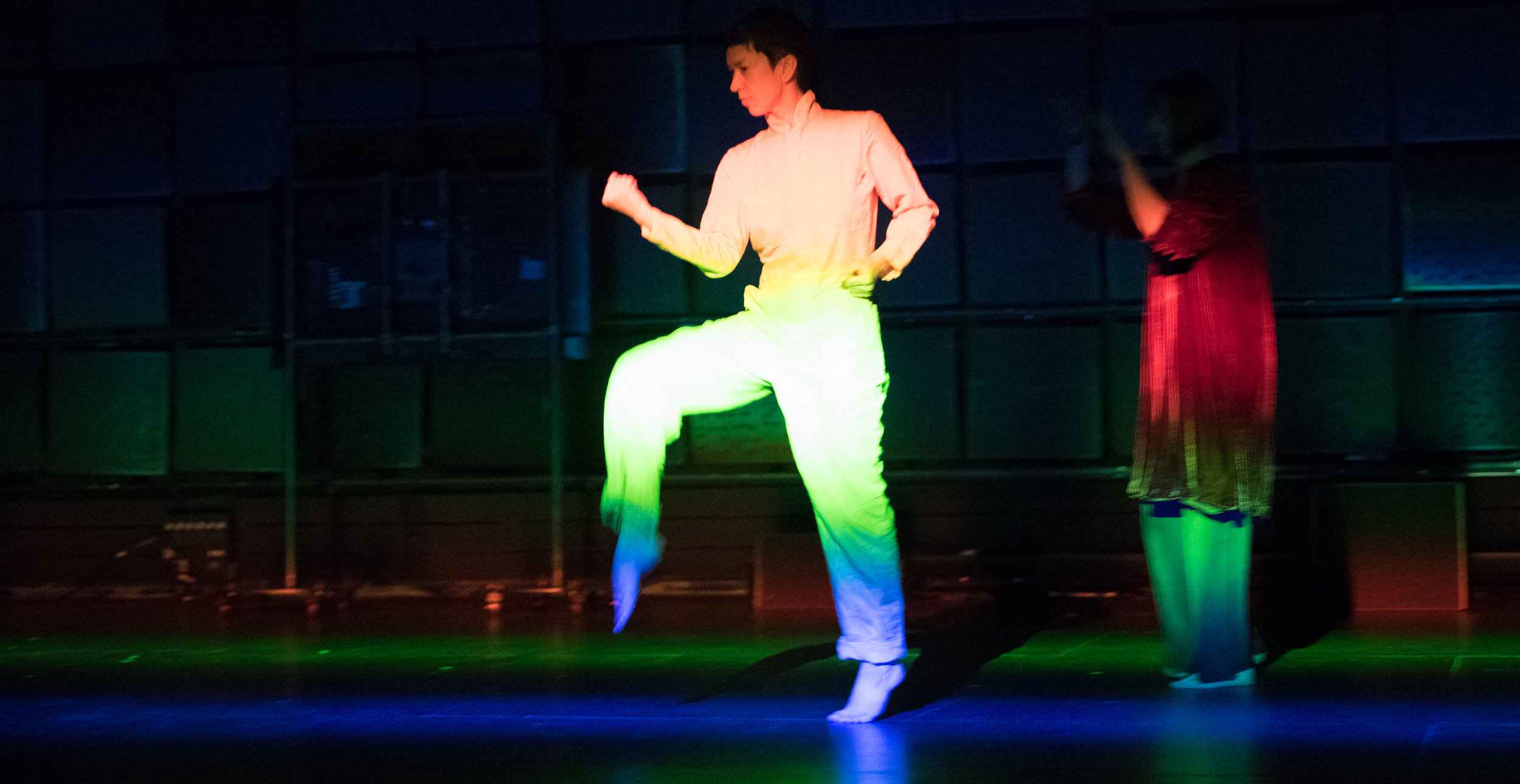
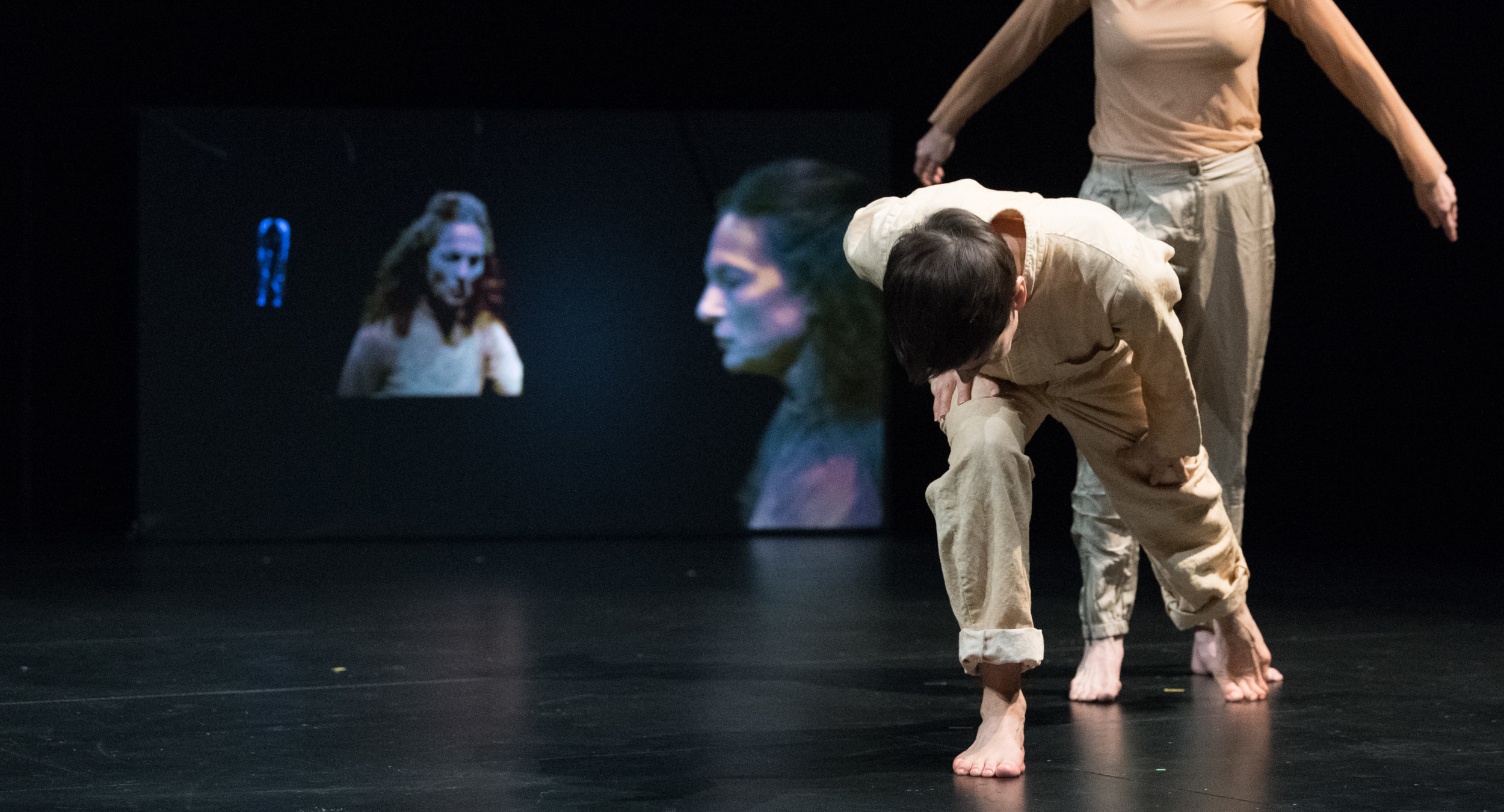
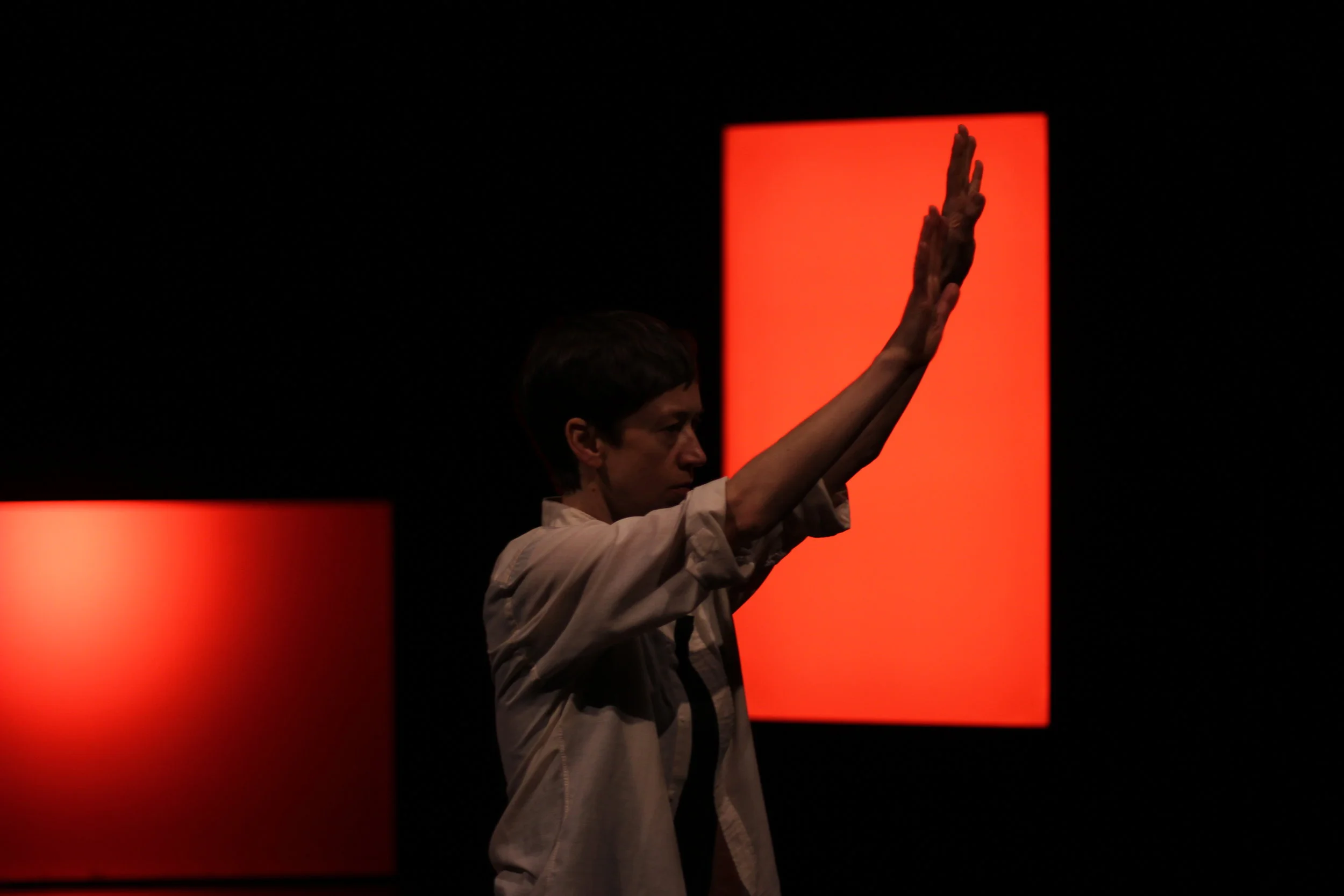
echo/archive live
Original idea by Elena Demyanenko and Erika Mijlin
Movement/Stage Direction: Elena Demyanenko in collaboration with the performers Eva Karczag Jodi Melnick and Dana Reitz
Video Design: Ray Sun
Lighting Design Thomas Dunn
Sound Design/Creative Advisor: Jon Kinzel
Costume Design: Kaye Voyce
Project/Video Assistants: Jordan Macintosh-Hougham and George MacLeod
Echo/Archive is an asymmetrical portraits and fractured narratives that aggregate through the polyrhythmic organization of video, light, and live performance. The focus of this three-part, multimedia work is a dialog between female dance/movement artists of different aesthetic genealogies – women that bookend a generation in age and dance history. By putting herself in both live and mediated interaction with iconic/mentor figures such as Eva Karczag, Jodi Melnick and Dana Reitz, Elena Demyanenko underscores the influences and traces in the body’s archived history, its priorities and values, and, ultimately, a physical sense of generational difference. What is inherited rather than experienced? Is heritage simply imagined or is it embodied? In essence, Elena asks how “trying to meet” can be both a process and a product of invention and, as such, an action that has the power to reveal dynamic interdependence and unspoken histories. Diversity of perspectives, backgrounds, and viewpoints are brought into a shared space of synchronicity and disparateness. The alternative perspective of camera, film editing, and graphic control of the image, is an audio-visual meaning-making device in this process. The camera is a fully present observer, witness, and magnifier of the echoes and repetitions between the dancers, rendering patterns and images that are almost imperceptible in live performance. Three LCD flat screens integrate pre-recorded and real-time video that juxtaposes an evanescent telepresence with the ephemeral moving image. As the body of the screens physically relocate to frame each segment from a particular standpoint, video appears to behave as a responsive medium, inviting the viewer to change their perspective while following its movement in space. The outcome of this arrangement between dance maker and filmmaker is an interdependent score of image, action, light, and sound. The changing divisions and perspectives on screen provide another compositional layer: from split screen to triptych, to the stage, moves are tossed between the various actants as a method of communication, revealing potential connections and forms. There are different points of view, but none are fully separate from the other, nor does one become the other: what is constituted in the work is multiplicity. Surrounded by our technologically prostheticized selves, we grapple with the messiness of being human and grasp at an ethics of tactility that seems only tacitly understood.

